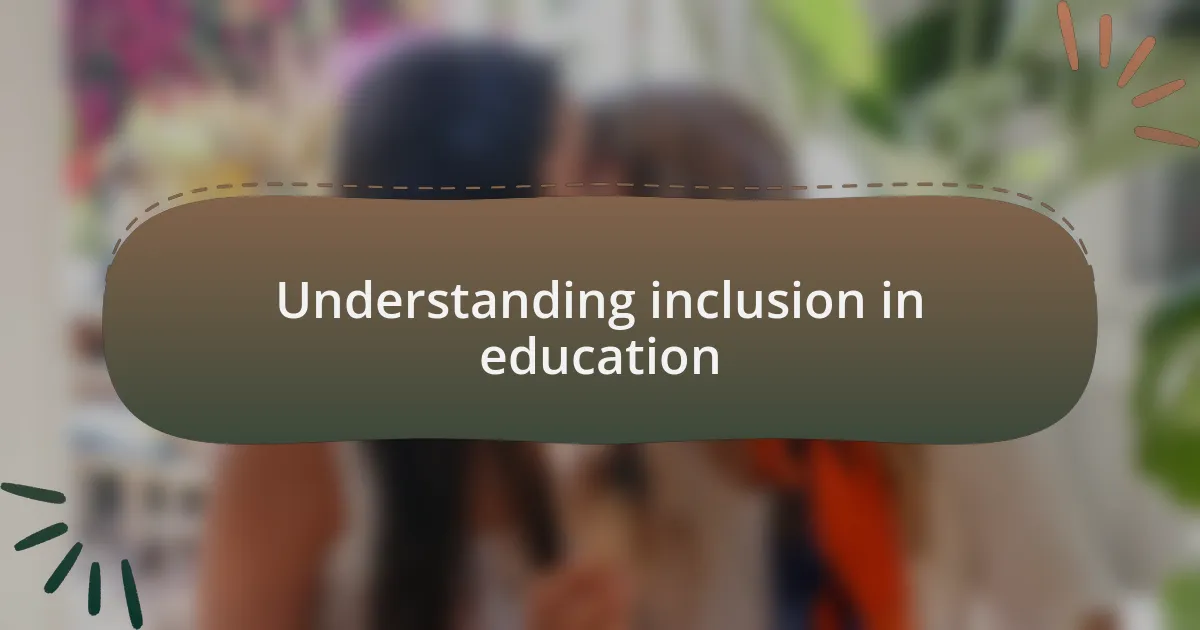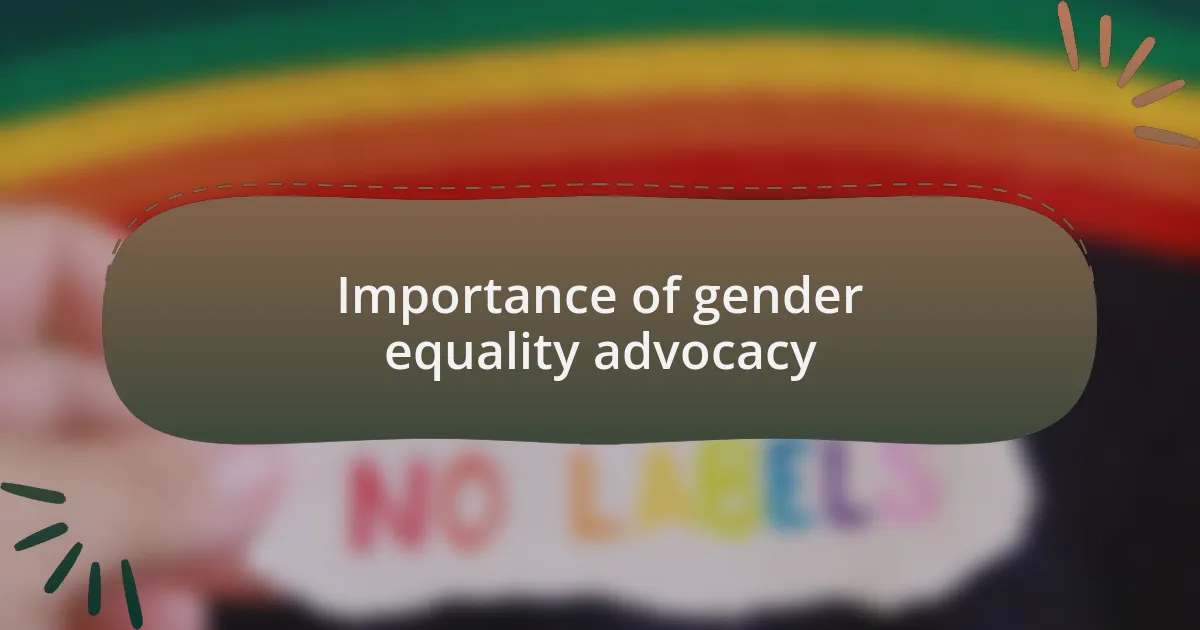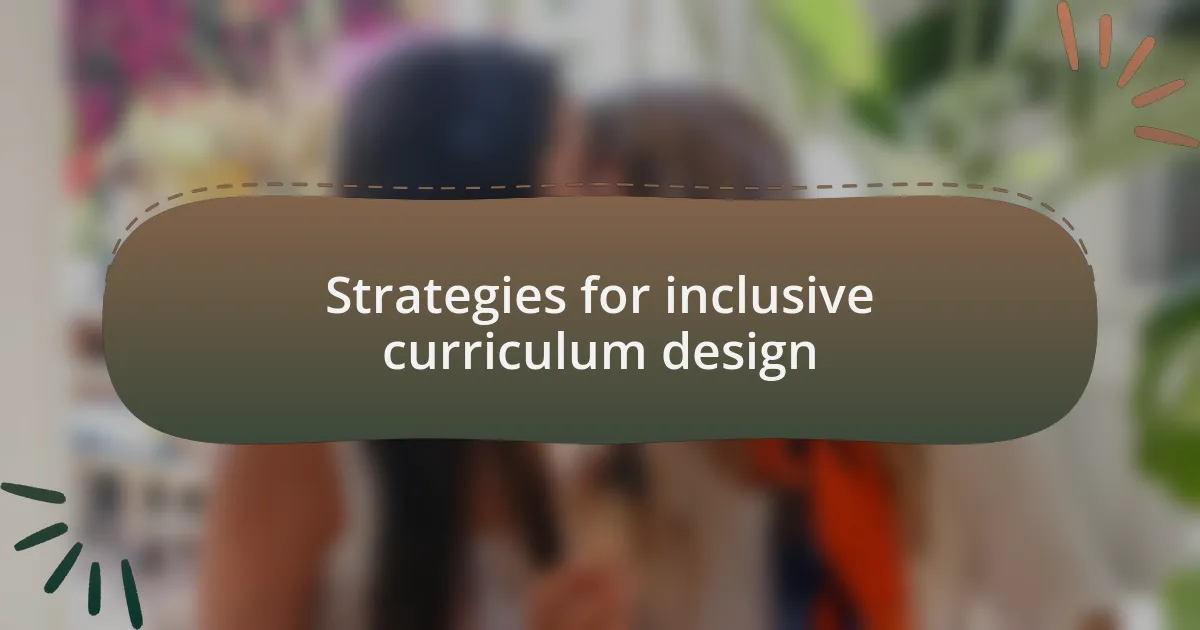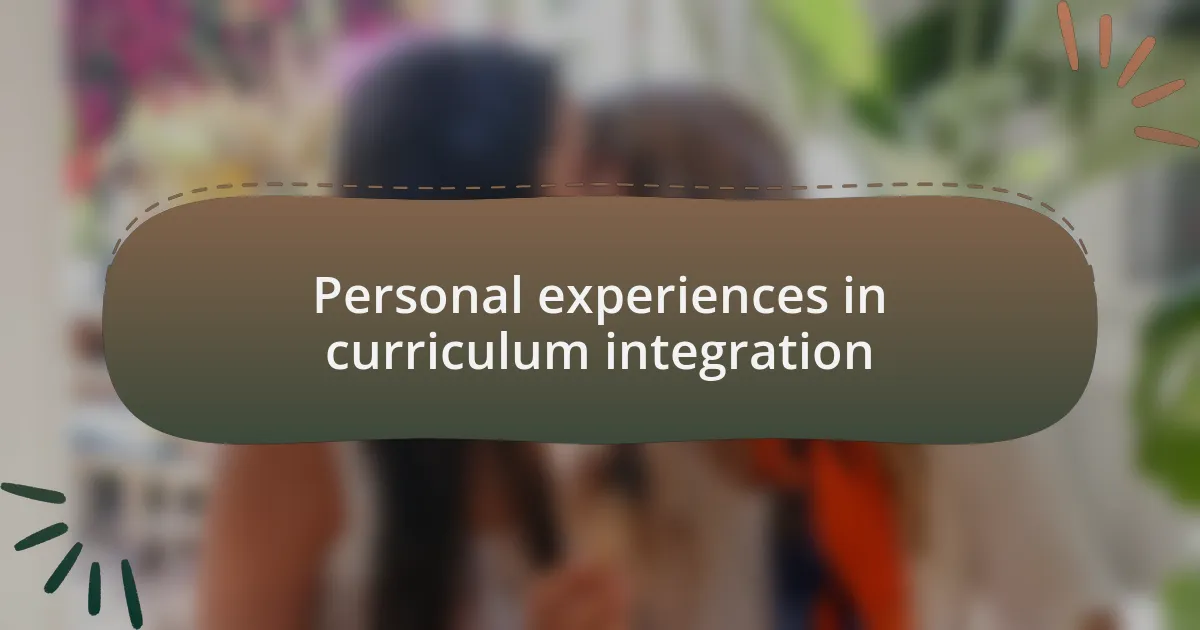Key takeaways:
- Inclusion in education requires creating a space where every student feels valued, with adjustments like visual aids and cultural representation enhancing engagement.
- Advocating for gender equality enriches educational experiences and promotes diverse perspectives, leading to innovative discussions and empowerment for all students.
- Implementing inclusive curriculum design involves using diverse materials and encouraging collaboration beyond traditional gender roles, enhancing creativity and teamwork.
- Personal narratives and feedback from students play a crucial role in fostering an inclusive environment, transforming classrooms into safe spaces for exploration and acceptance.

Understanding inclusion in education
Inclusion in education goes beyond merely integrating diverse students into the same space; it’s about fostering an environment where every student truly feels valued and understood. I recall a moment in my teaching experience where a student with a hearing impairment struggled in silence, but once we implemented visual aids and discussions that included everyone’s voice, the classroom transformed into a vibrant community. Isn’t it fascinating how these simple adjustments can create a ripple effect of positivity and engagement?
Understanding inclusion means recognizing the unique backgrounds and needs that each student brings to the classroom. I remember a conversation with a fellow educator who shared her experiences of adapting lesson plans to include different cultural perspectives. This not only enriched our students’ learning but also made them feel seen and respected. Can you imagine how empowering it is for a child to hear their culture represented in school?
At its core, inclusion in education is about empathy and awareness. Reflecting on my journey, I’ve found that when I actively listen to my students’ concerns and adapt my methods accordingly, I not only enhance their learning but also deepen my understanding of their challenges. Each step toward inclusion invites me to ask, how can I make this space more welcoming? What adjustments can I make to ensure every voice is heard? It’s an ongoing journey that inspires growth and transformation, both for the students and myself.

Importance of gender equality advocacy
Advocating for gender equality is essential because it champions the fundamental rights of every individual. I often reflect on my own experiences where gender bias shaped interactions in the classroom, reinforcing outdated roles and expectations. It’s disheartening to see how these norms can limit a student’s potential. Shouldn’t we strive for a world where every child, regardless of gender, is empowered to pursue their passions freely?
Furthermore, gender equality advocacy fosters diverse perspectives, enriching discussions and learning experiences. I remember a particularly lively debate in one of my classes where contrasting viewpoints between genders led to breakthroughs in understanding complex issues. It was mesmerizing to witness how those differences elevated the conversation and brought new ideas to the forefront. Why then, should we limit those vibrant exchanges by ignoring the importance of gender balance in our curriculum?
Ultimately, promoting gender equality isn’t just a moral imperative; it’s a catalyst for innovation and progress. I’ve seen firsthand how inclusive practices create environments where creativity flourishes, and collaboration becomes the norm. Isn’t it empowering to think that by advocating for equality today, we’re not only transforming our schools but also laying the groundwork for a more equitable society tomorrow?

Strategies for inclusive curriculum design
Creating an inclusive curriculum requires thoughtful strategies that place equity at the forefront. In my experience, one effective approach is embedding diverse materials that reflect various genders and backgrounds. For instance, when I designed a reading list, I made a conscious effort to include authors from underrepresented groups. It was eye-opening to see how students connected more deeply with stories that mirrored their own experiences, prompting discussions that might not have occurred otherwise.
Another pivotal strategy involves encouraging collaborative projects that break traditional gender roles. I recall a particular instance when I assigned a mixed-gender group project in which students had to design a campaign around a social issue. Watching the students gravitate towards roles they were passionate about—unconstrained by societal expectations—was incredibly rewarding. This dynamic highlighted how inclusive practices can spark creativity and foster teamwork, reminding me of the power of seeing beyond stereotypes.
Additionally, gathering feedback from students about their learning experiences is vital. One memorable moment came when I implemented anonymous surveys to gauge how inclusive students felt the curriculum was. The responses were enlightening, revealing areas for improvement, but also showcasing gratefulness for the topics that resonated with them. By actively listening to their voices, I realized that students are not just passive recipients of knowledge; instead, they are co-creators of an inclusive learning environment. Isn’t it amazing to think how a simple survey can unlock doors to deeper understanding and empathy?

Personal experiences in curriculum integration
My journey with curriculum integration began when I unexpectedly found myself teaching a class that was overwhelmingly gender-diverse. At first, I felt intimidated by the responsibility to create a welcoming atmosphere, but I soon discovered the power of inviting students to share their narratives. One day, during a discussion on social justice, a student courageously shared their experience with gender identity. That moment shifted the entire classroom dynamic, fostering a sense of safety that encouraged others to express their truths. It struck me then how vital it is to intentionally weave personal experiences into the curriculum.
I also remember the thrill of co-developing a unit on historical figures who challenged gender norms, such as women in STEM. As we researched figures like Ada Lovelace and Marie Curie, I witnessed students take ownership of their learning. They began to appreciate the journeys of these trailblazers, which not only sparked their interest in science but also encouraged them to redefine their own potential. This experience reinforced my belief that connecting with diverse histories enables students to envision a broader spectrum of possibilities for themselves.
Feedback moments have often caught me by surprise, like the time I initiated a storytelling session to assess the inclusivity of my curriculum. The stories students shared revealed their struggles and triumphs in grappling with gender expectations. I listened intently, my heart swelling with a mix of pride and sadness. It was a reminder that our classrooms have the potential to be safe havens for exploration and acceptance. How could we not lean into these narratives to shape a more equitable future?

Lessons learned from advocacy efforts
In reflecting on my advocacy efforts, I learned that listening is just as vital as teaching. For instance, during a project on gender-neutral language, students opened up about the comfort they felt when they could express themselves without fear of judgment. This taught me that when we prioritize their voices, we not only validate their experiences but also enrich the entire learning community.
Another lesson emerged from collaboration with local organizations championing gender equality. I organized a workshop alongside a community activist, and witnessing the synergy that formed was enlightening. The students’ engagement deepened as they explored broader societal contexts, reminding me that advocacy extends beyond the classroom walls. How often do we forget that learning can thrive outside conventional settings? This experience shifted my perspective, igniting a desire to broaden the boundaries of where and how education can occur.
Lastly, I discovered that flexibility is key. I remember one lesson on gender representation in media that didn’t go as planned. Many students had strong reactions to the material, which initially threw me off. But as I adjusted the discussion to address their concerns, I realized how essential it is to be responsive to student emotions and insights, creating a dynamic environment where learning can evolve organically. What if we embraced these unexpected turns more often?